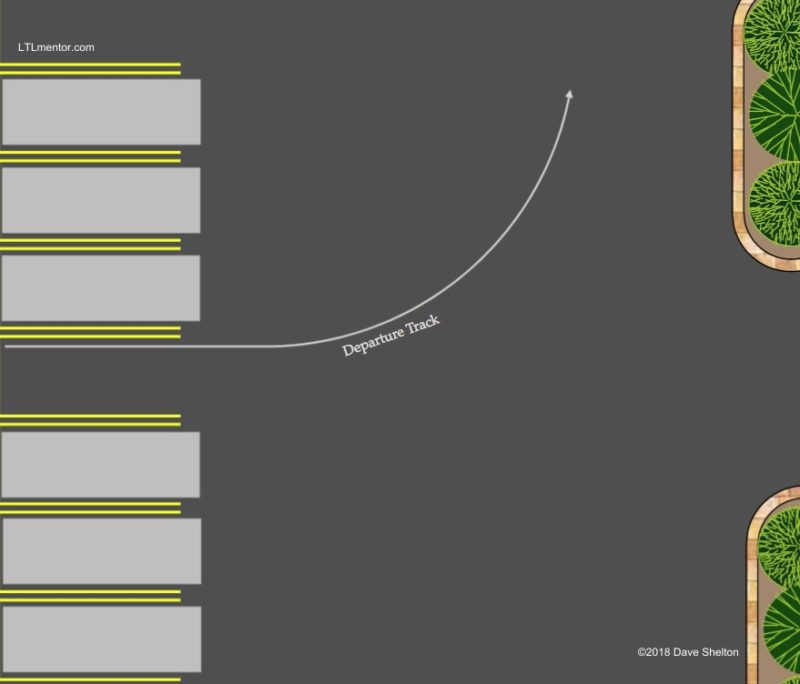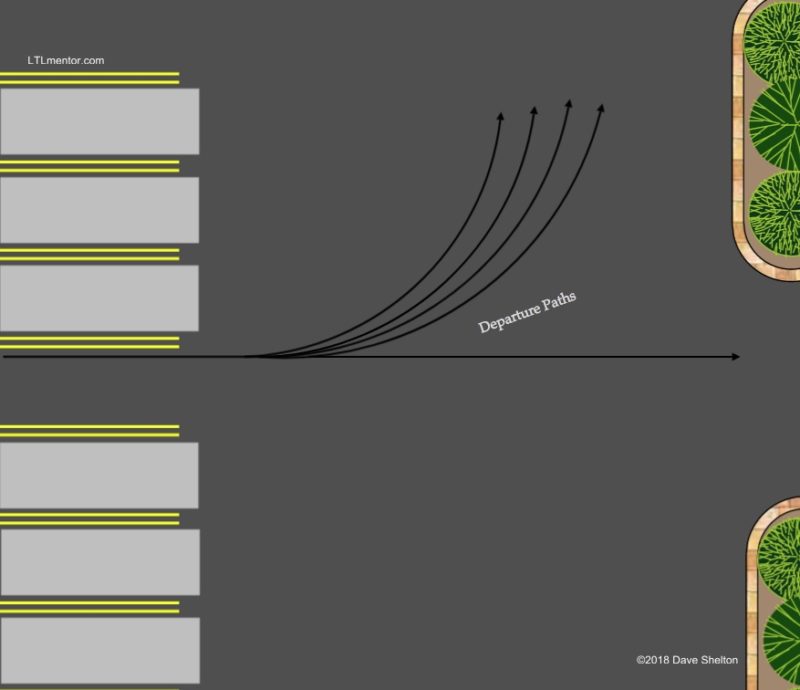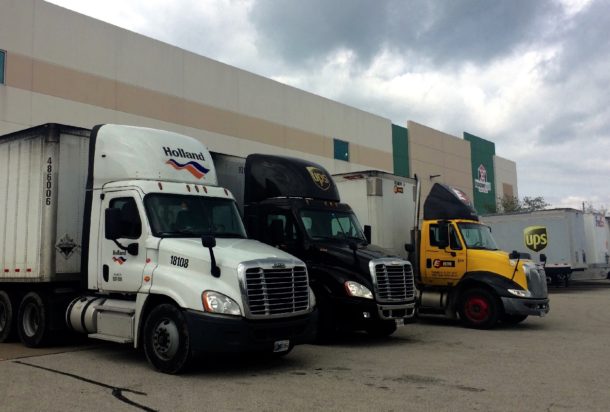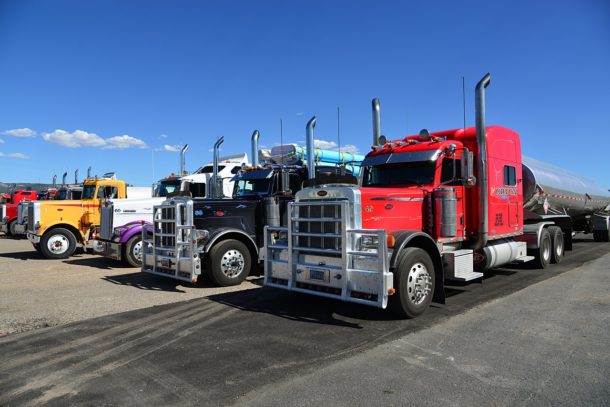Visualizing a Departure Path is the key to setting up consistently and minimizing pull-ups.
So, what exactly is a Departure Path, and why haven’t you heard of one before? I have found that the most natural way out of any given dock space also happens to be the easiest way back in.
I have discovered that where the trailer tires rest upon the ground is critical to success. So much so, that I now take my intended trailer tire path into careful consideration when I plan my Set-ups.
When I first started using the “Z” Set-up method, there was some uncertainty about how long to make Leg C.
As a general rule, the more extended Leg B is, the shorter Leg C needs to be to get the trailer in a “good position.” Conversely, a shorter Leg B requires a longer Leg C. If you haven’t learned the “Z” Set-up route yet, click here.
So the question then becomes, What exactly constitutes a “good position”?
When exactly, should the Set-up end and the backing up begin?
Early on, while looking out of my driver’s side window, I would decide whether or not what I saw looked acceptable or not. Sometimes it was, but other times I’d realize that I needed to pull up further.
Over time you get better at judging what a good position is. You just kind of know it when you see it.
The perfectionist in me wanted something that would help me repeat it consistently. I believe I have finally found the secret to consistency.
I first became aware of Departure Paths after a fresh snowfall.
One winter, I arrived at a customer location with the entire parking lot covered in a thin fresh layer of snow. The only tire tracks to be seen were my own, and the ones created by the spotter that just pulled a trailer out of my target door. The spotter pulled the trailer out and turned left.
When he cleared the way, I performed a “Z” Set-up.
During the final leg of the Set-up, I had my window down and was looking rearward. The previous trailer’s tires had left a gently curving arc in the snow that was coming right towards me. Naturally, I decided to stop my Set up when my trailer’s tires came to rest on the previous trailer’s tracks while I still had some offset between the tractor and trailer.
I was pleasantly surprised at how easily the trailer went into the hole. I followed that tire track right in without having to perform a pull-up. And, I remember thinking to myself how nice it would be to have tracks like that to guide me all of the time.
Well, I do have tracks like that guide me all of the time because I have learned to visualize them. It takes a little imagination, but you can do it too. Once you’ve seen the basic shape, you can learn to visualize them coming out from your tire target.
To keep things simple, I visualize a single path on my driver’s side that follows this basic shape and leads directly through my tire target.

There are many possible variations.
See every Departure path as a possible entry path.
See every Departure path as a possible entry path.
The main goal of the Set-up is to get the tandems onto an acceptable path. I always say, “Tires first. Sides second.” You must get the tires where they need to be on the ground before trying to square up the sides with the yellow lines. I accomplish this by using the concepts of Arrow awareness and Kingpin pressure.

In the above diagram, you can see just a few examples of possible departure paths that your rearmost trailer tire could trace as it departed this target space.
The easiest way out of your target space also happens to be the easiest way into it.
My set-up goal is always to get my tandems to come to rest onto one of these departure paths.
I also like to have enough initial offset to allow the sides of the trailer to become parallel with the yellow lines gradually.
If I set-up with my tandems outside of an acceptable departure path, getting the trailer into the target space is much more difficult. Wait. I take that back. It wouldn’t be more difficult; it would be impossible.
I would like to see more emphasis on the Set-up in truck driving schools.
I have been mentoring new drivers for a couple of years now. We should emphasize the importance of the Set-up from the very beginning. It’s the most underrated element of Backing up a tractor and trailer.



